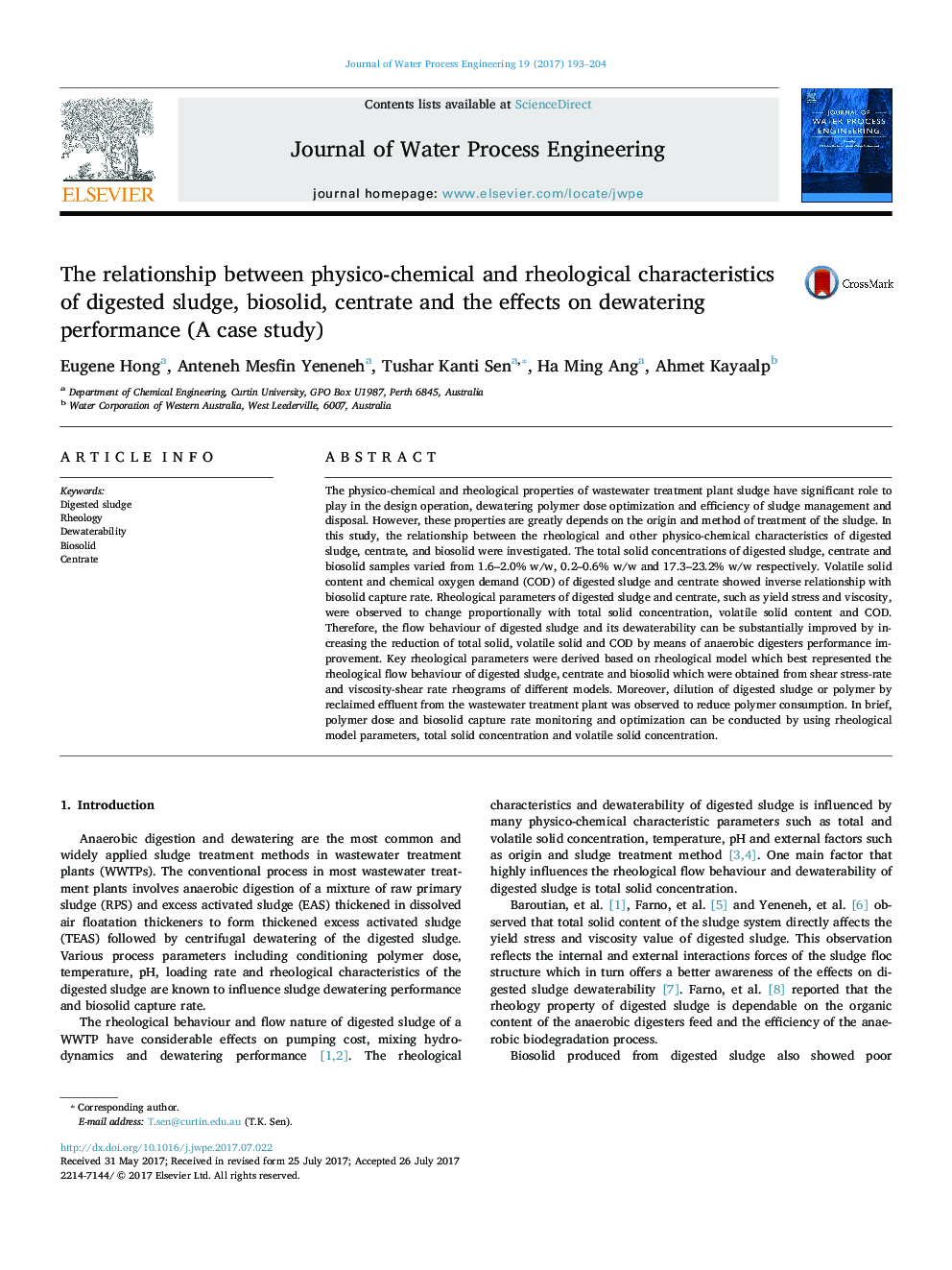| کد مقاله | کد نشریه | سال انتشار | مقاله انگلیسی | نسخه تمام متن |
|---|---|---|---|---|
| 4909986 | 1427553 | 2017 | 12 صفحه PDF | دانلود رایگان |
عنوان انگلیسی مقاله ISI
The relationship between physico-chemical and rheological characteristics of digested sludge, biosolid, centrate and the effects on dewatering performance (A case study)
ترجمه فارسی عنوان
رابطه بین ویژگی های فیزیکی-شیمیایی و رئولوژیکی لجن هیدز شده، بیستولید، مرکزیت و تاثیر آن بر عملکرد آبگیری (مطالعه موردی)
دانلود مقاله + سفارش ترجمه
دانلود مقاله ISI انگلیسی
رایگان برای ایرانیان
کلمات کلیدی
موضوعات مرتبط
مهندسی و علوم پایه
مهندسی شیمی
مهندسی شیمی (عمومی)
چکیده انگلیسی
The physico-chemical and rheological properties of wastewater treatment plant sludge have significant role to play in the design operation, dewatering polymer dose optimization and efficiency of sludge management and disposal. However, these properties are greatly depends on the origin and method of treatment of the sludge. In this study, the relationship between the rheological and other physico-chemical characteristics of digested sludge, centrate, and biosolid were investigated. The total solid concentrations of digested sludge, centrate and biosolid samples varied from 1.6-2.0% w/w, 0.2-0.6% w/w and 17.3-23.2% w/w respectively. Volatile solid content and chemical oxygen demand (COD) of digested sludge and centrate showed inverse relationship with biosolid capture rate. Rheological parameters of digested sludge and centrate, such as yield stress and viscosity, were observed to change proportionally with total solid concentration, volatile solid content and COD. Therefore, the flow behaviour of digested sludge and its dewaterability can be substantially improved by increasing the reduction of total solid, volatile solid and COD by means of anaerobic digesters performance improvement. Key rheological parameters were derived based on rheological model which best represented the rheological flow behaviour of digested sludge, centrate and biosolid which were obtained from shear stress-rate and viscosity-shear rate rheograms of different models. Moreover, dilution of digested sludge or polymer by reclaimed effluent from the wastewater treatment plant was observed to reduce polymer consumption. In brief, polymer dose and biosolid capture rate monitoring and optimization can be conducted by using rheological model parameters, total solid concentration and volatile solid concentration.
ناشر
Database: Elsevier - ScienceDirect (ساینس دایرکت)
Journal: Journal of Water Process Engineering - Volume 19, October 2017, Pages 193-204
Journal: Journal of Water Process Engineering - Volume 19, October 2017, Pages 193-204
نویسندگان
Eugene Hong, Anteneh Mesfin Yeneneh, Tushar Kanti Sen, Ha Ming Ang, Ahmet Kayaalp,
